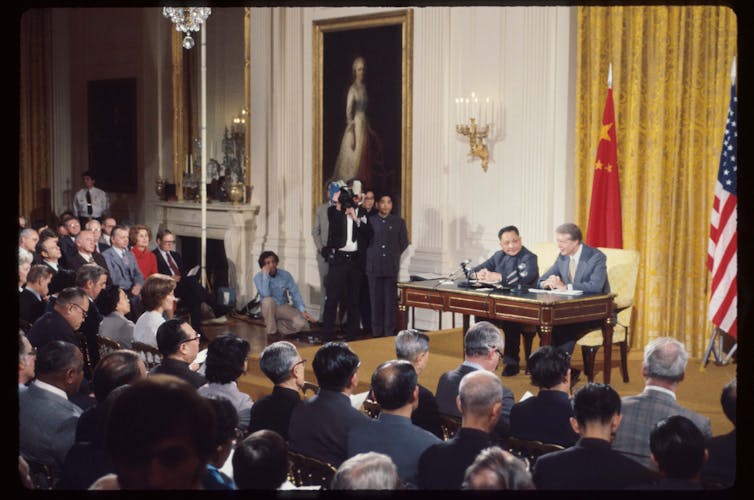Amid heightened tensions between the United States and China, the two countries signed a bilateral science and technology agreement on Dec. 13, 2024. The event was billed as a “renewal” of a 45-year-old pact to encourage cooperation, but that may be misleading.
The revised agreement drastically narrows the scope of the original agreement, limits the topics allowed to be jointly studied, closes opportunities for collaboration and inserts a new dispute resolution mechanism.
This shift is in line with growing global concern about research security. Governments are worried about international rivals gaining military or trade advantages or security secrets via cross-border scientific collaborations.
The European Union, Canada, Japan and the United States unveiled sweeping new measures within months of each other to protect sensitive research from foreign interference. But there’s a catch: Too much security could strangle the international collaboration that drives scientific progress.
As a policy analyst and public affairs professor, I research international collaboration in science and technology and its implications for public and foreign policy. I have tracked the increasingly close relationship in science and technology between the U.S. and China. The relationship evolved from one of knowledge transfer to genuine collaboration and competition.
Now, as security provisions change this formerly open relationship, a crucial question emerges: Can nations tighten research security without undermining the very openness that makes science work?

Chinese Premier Deng Xiaoping and American President Jimmy Carter sign the original agreement on cooperation in science and technology in 1979.
Dirck Halstead/Hulton Archive via Getty Images
China’s ascent changes the global landscape
China’s rise in scientific publishing marks a dramatic shift in global research. In 1980, Chinese authors produced less than 2% of research articles included in the Web of Science, a curated database of scholarly output. By my count, they claimed 25% of Web of Science articles by 2023, overtaking the United States and ending its 75-year reign at the top, which had begun in 1948 when it surpassed the United Kingdom.
In 1980, China had no patented inventions. By 2022, Chinese companies led in U.S. patents issued to foreign companies, receiving 40,000 patents compared with fewer than 2,000 for U.K. companies. In the many advanced fields of science and technology, China is at the world frontier, if not in the lead.
Since 2013, China has been the top collaborator in science with the United States. Thousands of Chinese students and scholars have conducted joint research with U.S. counterparts.
Most American policymakers who championed the signing of the 1979 bilateral agreement thought science would liberalize China. Instead, China has used technology to shore up autocratic controls and to build a strong military with an…



